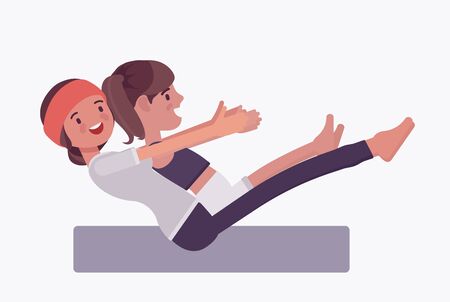1. Understanding the Importance of Gentle Movement
It’s no secret that many British professionals spend the majority of their working day sat at a desk, often glued to screens from nine to five (and sometimes beyond). While this has become the norm in offices across London, Manchester, and beyond, recent UK-based research is sounding the alarm on the risks associated with prolonged sitting. According to Public Health England, sedentary behaviour is now linked not only to increased risk of chronic conditions such as heart disease and type 2 diabetes, but also to reduced productivity and diminished mental wellbeing in the workplace.
An honest assessment reveals that gentle movement—think subtle stretching, light walking, or desk-based mobility exercises—can be a game changer for British office workers. These small interventions may seem trivial, but evidence shows they can help combat fatigue, sharpen focus, and improve mood. The Chartered Institute of Personnel and Development (CIPD) highlights how integrating regular movement into the workday leads to higher engagement levels and a noticeable boost in overall job satisfaction.
For British professionals juggling deadlines and meetings, prioritising movement isn’t simply about ticking a box for wellbeing; it’s a practical approach to sustaining long-term productivity and health. By understanding the importance of gentle movement within our unique office culture, we set the stage for realistic changes that support both individual performance and collective workplace morale.
2. Spotting Movement Opportunities in the British Workplace
For many British professionals, the office routine often revolves around long hours at a desk, punctuated by meetings and perhaps the occasional tea break. However, weaving gentle movement into your daily schedule can be both achievable and culturally relevant, especially when you spot opportunities hidden within typical UK work habits.
Everyday Chances to Move
Whether you’re working from a traditional open-plan office in London or remotely from a home office in Manchester, there are countless ways to integrate gentle exercises without disrupting productivity. The key is to identify natural pauses and transitions during your day—moments when movement feels organic rather than forced.
Practical Tips for Gentle Movement
| Opportunity | Suggested Movement | British Context |
|---|---|---|
| Tea Breaks | Do a few standing stretches or shoulder rolls while waiting for the kettle to boil. | The classic tea round offers a perfect excuse to stand up and gently mobilise joints. |
| Phone Calls | Stand up or walk around the office while on the phone. | Most colleagues won’t bat an eyelid if you pace during a call—especially common in open-plan settings. |
| Walking Meetings | Suggest a stroll around the block instead of sitting in a meeting room. | A brisk walk outside (weather permitting) can boost creativity and is increasingly popular in UK workplaces. |
| Lunch Breaks | Take a short walk, even just around the building or nearby green space. | Parks and public gardens are common features near many UK offices—take advantage of them for fresh air and movement. |
| Printer Trips | Choose the printer farthest from your desk when printing documents. | This small change can add hundreds of extra steps to your day—every bit counts! |
| Brew Rounds for Others | Offer to make tea or coffee for colleagues as a reason to get moving. | This not only gets you out of your seat but also strengthens workplace camaraderie—a win-win by British standards. |
Making It Stick: Consistency Over Intensity
The goal isn’t to overhaul your daily routine overnight, but to gradually layer these small, sustainable movements into your working day. By spotting and seizing these quintessentially British opportunities, you’ll foster better health and productivity without feeling out of step with your work culture. The next section will explore how to create gentle movement rituals that fit seamlessly into even the busiest schedules.

3. Overcoming Common Barriers in a UK Office Setting
Let’s face it: integrating gentle movement into the typical British office day isn’t always straightforward. Concerns about fitting in, unpredictable weather, and limited space can all stand in the way of good intentions. However, with a bit of practical thinking and sensitivity to UK workplace culture, these barriers can be navigated.
Addressing Office Culture
One of the biggest concerns is often the social aspect—no one wants to feel out of step or draw unnecessary attention. In many British offices, there’s an unspoken etiquette about what’s “normal” during working hours. If you’re worried about appearing odd, start small: try standing for short periods during calls, or take a brisk walk around the building at lunch. If possible, suggest a group activity such as a ‘stretch break’—framing it as a team wellness initiative can make participation more comfortable for everyone.
Weather Woes
It’s no secret that the British weather can be uncooperative, making outdoor walks less appealing for much of the year. The solution? Prepare for rain by keeping an umbrella and suitable shoes at your desk, or explore indoor options like walking up and down stairwells or using quiet corridors for brief strolls. Some offices offer wellness rooms or unused meeting spaces—these can double as spots for light stretching or movement sessions.
Navigating Space Limitations
Many UK workplaces are compact, especially in urban centres where real estate comes at a premium. Desk exercises—such as shoulder rolls, ankle rotations, or discreet stretches—require little space and can be done without leaving your workstation. For those working in open-plan offices, opt for movements that are subtle but effective. If privacy is a concern, consider using break times to move in less populated areas like kitchenettes or stairwells.
By acknowledging these challenges and approaching them with realism and resourcefulness—qualities well regarded in British work culture—it becomes easier to weave gentle movement into even the busiest office routine.
4. Sample Movement Routines for Your Working Day
Integrating gentle movement into your daily routine needn’t be complicated or disruptive. Below, you’ll find a selection of simple, discreet exercises and stretches that are suitable whether you’re at your desk, making a cuppa in the office kitchen, or enjoying a quick stroll round the block. These routines have been designed with the British workplace in mind—no special equipment required, and all appropriate for varying fitness levels.
Desk-Based Movements
| Exercise | Description | Recommended Frequency |
|---|---|---|
| Neck Rolls | Sit upright, slowly roll your head in a circular motion to ease tension. | Every hour or as needed |
| Shoulder Shrugs | Raise both shoulders towards your ears and release gently. | 5-10 repetitions, 2-3 times per day |
| Ankle Circles | Sit with feet flat, lift one foot and rotate the ankle clockwise then anti-clockwise. | 10 circles each direction, per foot |
| Seated Torso Twist | Sit tall, twist gently to one side holding the back of your chair for support, repeat on other side. | 3-5 times per side, once every few hours |
Movements in the Office Kitchen or Break Area
- Countertop Calf Raises: While waiting for the kettle to boil, rise onto your toes and lower back down—great for circulation.
- Wall Push-Ups: Stand an arm’s length from a wall and do a set of gentle push-ups against it. This works arms and chest without drawing too much attention.
- Standing Quad Stretch: Hold onto the counter for balance, bend one knee to bring your foot towards your bum and hold. Swap sides after 20 seconds.
A Quick Stroll Around the Block
If you can spare five or ten minutes, a brisk walk outside is invaluable. Not only does it refresh your mind, but it also helps combat stiffness from prolonged sitting. Try walking at a pace where conversation is still possible but you feel slightly out of breath; this is ideal for boosting circulation without overexertion.
Troubleshooting: Making It Work For You
- If space is tight or privacy is limited, choose seated movements or stretches you can do at your workstation.
- If you work remotely or have more flexibility, consider setting reminders to stand up and move every hour—using apps or simply setting an alarm on your phone.
- Invite colleagues to join you for a lunchtime stroll; it’s a great way to build camaraderie while staying active.
A Note on Consistency
The key is to make these movements part of your regular routine rather than something you only do sporadically. Over time, these small efforts can add up to significant improvements in comfort and wellbeing during the working day.
5. Leveraging British Workplace Resources and Culture
One of the understated strengths of working in the UK is the wealth of resources and cultural habits that can be harnessed to support gentle movement throughout the working week. Employers across Britain are increasingly aware of the importance of wellbeing, with many offering initiatives such as lunchtime yoga sessions, subsidised gym memberships, or standing desk options. If your workplace provides these benefits, consider making regular use of them—perhaps by setting a recurring calendar reminder to join a weekly class or by experimenting with adjustable desks to alternate between sitting and standing during long stretches at your computer.
Beyond office walls, local green spaces are a hallmark of British towns and cities. Whether its a quick stroll through a city park, a walk along a canal path, or even a few minutes spent in a nearby garden square, these pockets of greenery offer both physical and mental refreshment. Try suggesting “walking meetings” to colleagues, or simply take your tea break outdoors when the weather allows—a nod to the classic British appreciation for fresh air and a good cuppa.
Public transport is another uniquely British asset that can facilitate movement. Instead of driving door-to-door, you might hop off the bus or Tube one stop early to add an extra ten-minute walk to your commute. Many train stations now have secure cycle storage and showers, making cycling to work more accessible for those who wish to incorporate active travel into their routine. Even small changes—like choosing stairs over lifts in your station or office building—can accumulate over time.
The key lies in observing what’s already available within your workplace and local environment, then weaving these elements into your daily routine. By combining employer-led initiatives with the natural advantages of British urban design and public infrastructure, you can make gentle movement a sustainable part of your professional life without requiring radical changes or extra hours in your day.
6. Tracking Progress and Staying Accountable
Making gentle movement a regular part of your working day is a journey, not a sprint. In the context of British workplaces, tracking your progress and staying accountable can make the difference between fleeting good intentions and lasting change. Here’s how you can utilise local resources and community spirit to keep yourself on track.
Using British Tech for Movement Monitoring
Start by taking advantage of technology designed or popularised in the UK. Many professionals rely on fitness trackers such as Fitbit or Garmin—both widely available across Britain—to monitor daily steps and activity levels. The NHS also offers free apps like Active 10, which encourages at least ten minutes of brisk walking daily. Syncing these tools with your phone provides instant feedback and gentle reminders, making it easier to maintain awareness throughout your workday.
Journals: The Classic Approach
If you prefer a more analogue method, consider keeping a movement journal. A simple notepad from WHSmith or Paperchase does the trick. Each day, jot down what activities you managed—perhaps a lunchtime stroll along the Thames or stretches during a tea break. This tangible record helps reinforce new habits and makes it easy to spot patterns over time.
Leveraging Office Peer Support
Don’t underestimate the power of camaraderie in the British workplace. Consider forming an informal “movement club” with colleagues; this could be as simple as sharing step counts in the office WhatsApp group or organising short post-meeting walks around your building’s green space. Friendly encouragement (or even some light-hearted competition) goes a long way towards sustaining motivation.
Focusing on Realistic and Sustainable Change
The goal isn’t perfection—it’s steady progress that fits into your unique routine. Celebrate small wins, whether that’s choosing the stairs over the lift at Euston or stretching before your mid-afternoon cuppa. British professionals thrive on practical solutions; by combining tech, journaling, and peer support, you’ll find it much easier to stick with gentle movement for the long haul.


